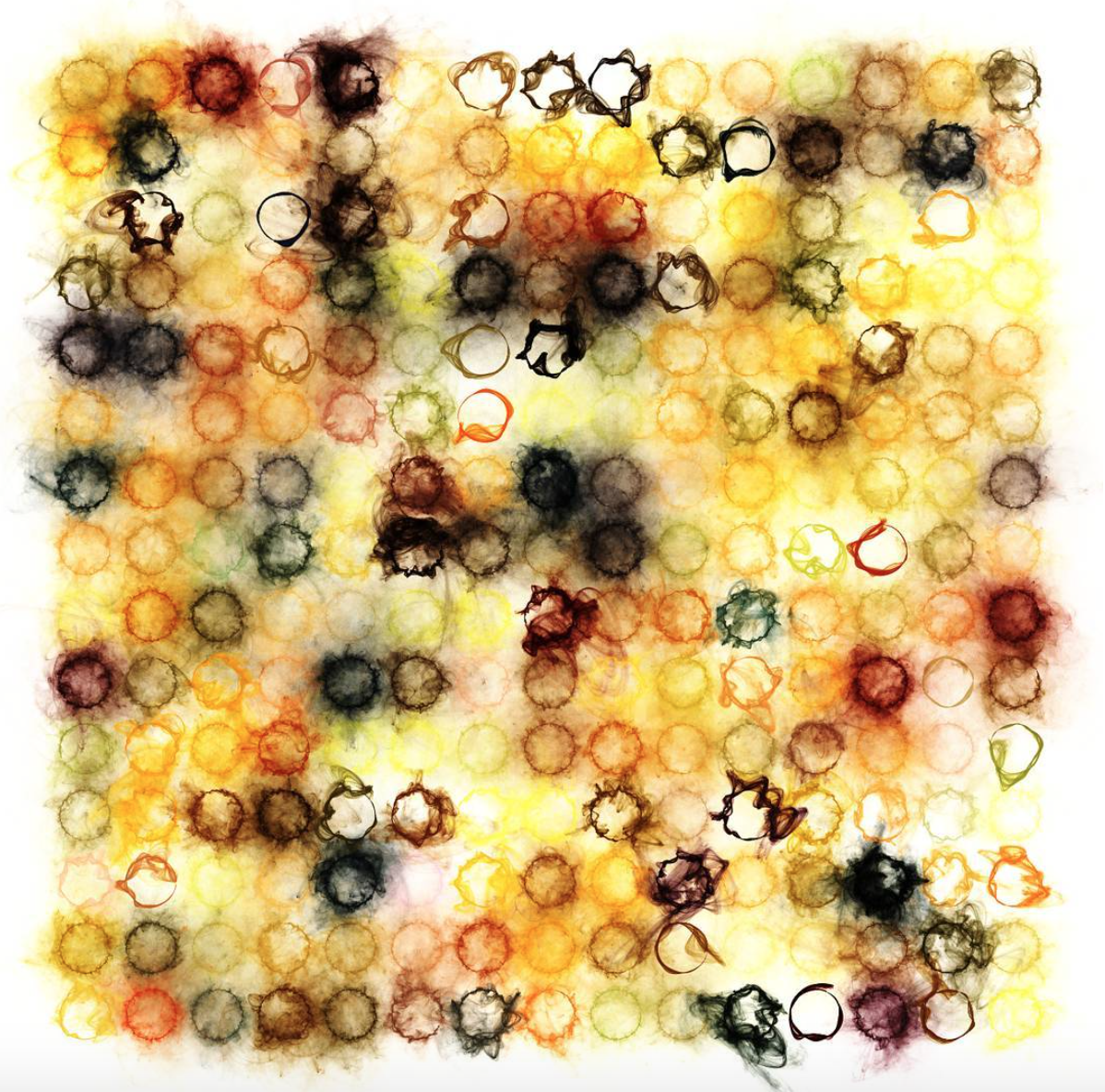Meditations
'Meditation is, at its foundation, a technology of attention, a technology that is directed by intention.' (Howard Rheingold in Jaokar, 2011)
Taking influence from the smoke rising from burning incense, my piece aims to recreate the feeling of calm and serenity that comes from meditating.
produced by: Amy Cartwright
Inspiration
The inspiration for this project came from the image below, created by artist Anders Hoff. The juxtaposition of messiness overlaying the rigid structure of the grid was something I was interested in recreating. It reminded me of burning incense cones. The dense tightly compacted powder slowly dissolving into smoke spiraling upward and outward. Burning incense is something I strongly associate with meditation. When I meditate I struggle to keep my eyes closed, I find that my thoughts wander and I am unable to focus. Instead I focus on the smoke rising from the incense. The smoke becomes a visual aid.
My piece aims to capture the aesthetics of the smoke and use this as inspiration to create structured, intricate and repetitive patterns that invoke a sense of serenity. I am not attempting to recreate the movement qualities of smoke. The piece is subtle, calming and mesmerising but at the same time is constantly generating and updating, just as our thoughts are. There is a lot of noise visible in Hoff’s painting but order is still present. This idea of complexity within simplicity is what I have tried to capture within my project.
The Details
The piece evolves through four scenes. Themes of randomness, circular motion and order can be seen throughout.
The first image appears gradually, it’s subtle, the color slowly altering so that it can be seen against the backdrop. The image in scene two is an inversion of this. It’s not as gentle, it’s darker and the randomness is increased allowing it to morph significantly from its roots in scene one. Both of these images are created using Perlin Noise. This pseudorandom repetitiveness within the movement combined with the layering of shapes makes for intricate and complex patterns.
With the third section I wanted to recreate the juxtaposition seen in Hoff’s work. Generating the image using restricted random movement gives an impression of messiness and chaos but the use of a structured colour pattern helps to maintain the underlying order. This can be seen clearly when the movement is stopped and it is apparent that the image follows a clear pattern. I wanted to create a textured backdrop that continued with the circular theme.
The fourth section is similar in concept to scenes one and two. Again we see a circular image generated however this time the movement is not random but carefully structured. Circles are layered to create a mesh like quality and the color is specifically chosen to mimic but not match those used in scene one.
I decided to use a greyscale colour palate as it allowed me to mimic the intricate haziness of smoke. In the first two images the colour is mapped to the radius of the shape allowing to it change over time and become denser the smaller the shape. In the third scene a pattern is made based on the shapes location on the screen. The fourth scene remains the most structured, with specific colors within the greyscale chosen for their subtlety. Using colours that are not quite black and not quite white allowed for more intricate layering. In all of the scenes the transparency allows the shape to leave behind a trace, a memory of where it has been.
References
Anders Hoff - http://inconvergent.net
Jaokar, A (2011). Meditation in the Age of Facebook and Twitter
Shiffman, D (2008). Learning Processing, Pg 213
http://openframeworks.cc/documentation/
https://processing.org/reference/
Noisy Sun, Triangle Vectors, examples given in class.































































